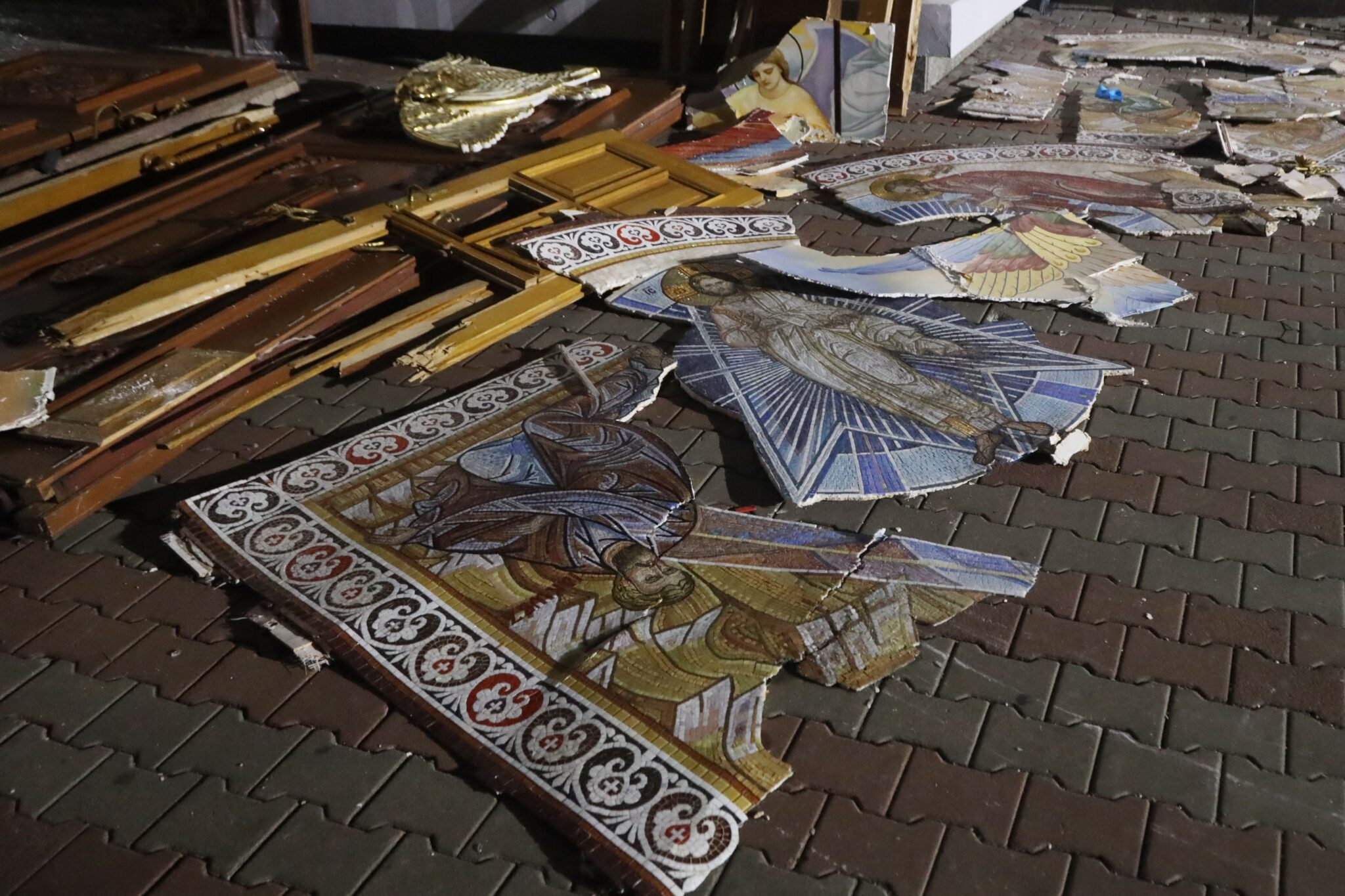<em>A damaged icon of the Transfiguration laid out near the wreckage of Transfiguration Cathedral in Odesa after a missile strike on July 23, 2023</em>. Getty Images
The first Sunday in August this year is the Feast of the Transfiguration, and so our run of Ordinary Time Sundays is interrupted, though the Gospel is still taken from Matthew. Immediately before the passage we read, Jesus tells his disciples: “Truly I tell you, there aresome standing here who will not taste death before they see the Son of Man coming in his kingdom” (Mat 16:28). He emphasises the close connection between this promise and the events on the mountain by telling us that “six days later Jesus took with him Peter and James and his brother John...” (17:1).
Now the coming of the Son of Man in his kingdom means a great deal more than the events that took place 2,000 years ago. We say every Sunday that “he will come again in glory to judge the living and the dead”, and this second and glorious coming will be the ultimate fulfilment of Christ’s promise six days before the Transfiguration. But at the same time the Transfiguration is surely a partial fulfilment of this promise: the glory with which Christ will definitively reveal himself to the world at the end of time is that same glory that he unveiled before Peter, James and John – who were, we can say, the “some standing here” when he made his promise.
Moreover, our first reading confirms this connection. When Christ speaks of himself as the Son of Man, he invites us to recognise him as the character in the nocturnal vision of Daniel 7, the one “coming on the clouds ... like a Son of Man” (Dan 7:13), to whom authority and dominion are given over the whole of creation. The description of the Transfiguration of Jesus calls this same vision to mind – his shining face, his brilliant white clothes; and the wider context of clouds and a voice from heaven tells us that this is an apocalyptic vision, just like that of the prophet Daniel.
That prophecy might originally have been understood more as an allegorical event than as a realistic vision of something going on in heaven. Indeed, the verses of Daniel that follow our reading tell us that the beasts over-come by the one like a son of man are four kings, presumably four empires that have oppressed the people of Israel; and then “kingship and dominion and the greatness of the kingdoms under the whole heaven shall be given to the people of the holy ones of the Most High”(Dan 7:27). In other words, the Son of Man represents Israel, God’s chosen people.
But he also represents the restoration of that dominion over creation that was humanity’s original vocation (Gen 1:26). The hope expressed in this prophecy is that God would restore humanity to its original condition through the vindication of his people Israel. However, prophecies can very often mean more than even the prophet himself might have realised, and what Daniel saw was Christ himself restoring humanity – not Christ instead of Israel, but rather Israel in and through Christ, or perhaps we might say Christ as and for Israel.
Thus, when the three apostles saw Christ transfigured on the mountain, they saw the restorer of humanity, the one in whom the fall is overcome, and we once more take on the dignity of God’s vicegerents on earth, a dignity that Christ has been manifesting throughout his ministry. The voice from the clouds tells the apostles that they must listen to Christ. I suggest that this is not a general piece of advice but refers back to the end of the previous chapter again. Christ has told his disciples that he must suffer and die, and Peter has refused to heed this. Then Christ has told them – not for the first time – that they must take up their own cross and follow him, losing their lives so as to win them.
This is the way in which Christ will win, not just for himself but for us, that dominion lost to us at the Fall. After the resurrection he will tell the apostles that he has indeed won it, and will send them out into the whole world to proclaim that victory, and to offer every human being a share in the glory of the Transfigured One through their sharing in his Cross.



